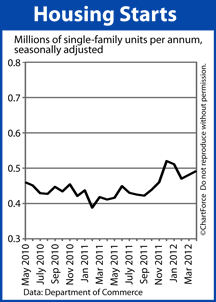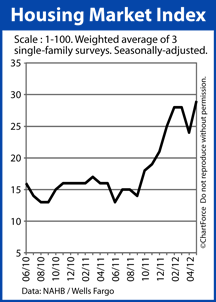 The Federal Open Market Committee released its April 2012 meeting minutes this week, revealing a Federal Reserve in the ready in the event additional monetary stimulus is needed.
The Federal Open Market Committee released its April 2012 meeting minutes this week, revealing a Federal Reserve in the ready in the event additional monetary stimulus is needed.
The Fed Minutes function much like the minutes from a business meeting; or, condominium association meeting, for example. It’s a detailed review of the conversations and debates between FOMC members, and is typically published 3 weeks after a Federal Reserve meeting.
The Fed Minutes is a follow-up statement on the FOMC’s more well-known, post-meeting press release. It’s also much more lengthy.
Whereas the April 25, 2012 press release totaled 444 words, the Fed Minutes spanned 6,618.
Those extra words are important, too, because the detail offered within the Fed Minutes lends insight into how our nation’s central bank views the U.S. economy, its strengths and weaknesses, and its threats.
From the Fed Minutes, some of the Fed’s comments includes :
- On employment : Unemployment may remain elevated through 2014
- On housing : Tight underwriting is “holding down” the housing market
- On rates : The Fed Funds Rate should remain low until late-2014
There was also substantial talk about Europe and its role in the U.S. economy. Notably, U.S. financial institutions have been actively reducing their European exposure to contain damage in the event of a full-blown economic crisis abroad.
This has had the net effect of lowering mortgage rates in Ohio. Mortgage bonds often benefit from economic uncertainty.
In addition, because several Fed members acknowledged a willingness to add new stimulus to the U.S. economy, mortgage markets are accounting for the possibility it could happen. It’s unclear whether stimulus would be added after the Fed’s next meeting, or at some point later in the year, or at all.
The FOMC has its next scheduled meeting June 19-20, 2012.
 The new construction housing market continues to improve.
The new construction housing market continues to improve. Homebuilder Confidence is on the rise once again.
Homebuilder Confidence is on the rise once again.